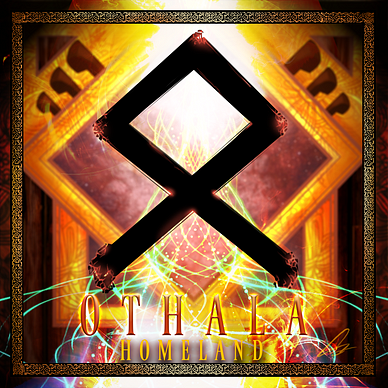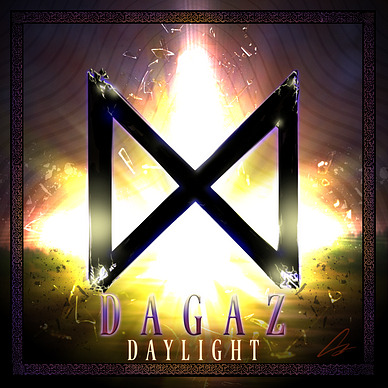The Rune Series: MANNAZ (Mankind)
The gifts of Mind and Memory
The Runes of this series belong to the Elder Futhark, one of the oldest alphabets in recorded history. Each Rune has endless interpretations and deep meanings; while their origin and/or intent is lost to history, most interpretations come from the ‘Rune Poems’, possibly written around the 8th century. This series will explore the Runes through a personal journey and intuitive interpretation alongside knowledge collected from written works, such as ‘The Book of Runes’ (R.Blum, 1982), and the intricately crafted website ‘Runesecrets.com’ by Tyriel.
Greetings Dear Reader,
Welcome back to the Rune Series where we explore the ancient Runes through a psychological, practical, spiritual and philosophical lens.
You can check out the rest of this series below:



Note: As of August 2024, the website Runesecrets.com by Tyriel appears to have gone offline. I will update this if anything changes but if you wish to delve into his work on the Runes (which has inspired much of this series) you can check out his book ‘The Book of Rune Secrets’ (2012) Here. I like to think of my work as built upon the foundations he laid. Hope the Gods are watching over you, Tyriel.
MANNAZ
Also known as Maðr, this Rune translates as ‘Man’, though modern interpretations collectively seem to assume it’s referring to ‘Humanity’ as a whole. I guess I’ll roll with that, though it’s interesting to notice its position next to LAGUZ right in the centre of the last row. I will argue that Mannaz represents more of the masculine aspects of the soul/psyche (left-side, left-brain, logic/intellect) while Laguz is more feminine (right-side, right-brain, expression/imagination).
The remnants of Icelandic poetry don’t seem to contain this particular Rune, substituting it instead for ALGIZ. What we have as MANNAZ comes from an Anglo-Saxon version of the poem:
Man bẏþ on mẏrgþe his magan leof:
sceal þeah anra gehƿẏlc oðrum sƿican,
forðum drẏhten ƿẏle dome sine
þæt earme flæsc eorþan betæcan.The joyous man is dear to his kinsmen;
yet every man is doomed to fail his fellow,
since the Lord by his decree
will commit the vile carrion to the earth.
The story of the final row appears to be a long, difficult journey through the maws of Fenrir, offering sacrifice and moving forward in pursuit of (re)birth. If Mannaz and Laguz represent the union of opposites, both spiritually and biologically, what follows then is a natural progression through the seed and its growth towards enlightenment.
The Sacred Masculine
What is the Sacred Masculine? This is a really important topic to explore, a task which I attempt in another series On Masculinity.
The shape of MANNAZ seems to be a combination of EHWAZ and DAGAZ, or a union of opposites that brings illumination. You could see it as a structure resting atop solid, tall foundations.
Rune Series 20/24
Third Aett: Mannaz
Meaning: ‘Man’
Associated English letter: M
According to alchemy, Masculine energy is often associated with the sun. This is because the sun shines forth, dispels the night and brings clarity. In turn, clarity is the organisational structure of the intellect, logic and reason that, if properly utilized, balance out the overwhelming chaos of the Unconscious. The Unconscious is infinite, unknown (therefore dark), but also feminine because it’s often represented by Mother Nature (or the archetypal Great, Terrible Mother), which gives birth to new things.
If you’ve been paying attention so far, none of this is new. The Aesir gods are representations, I think, of the rational structuring of the universe in the same way that the Olympians organise the cosmos, YHWH orders creation or Marduk cuts up Tiamat. ‘Coincidentally’, Marduk is associated with the planet Jupiter (the Roman equivalent of Zeus).
But MANNAZ is an attempt to bring it all back to ‘earth’; to the biological man, not the abstract forces in Asgard. As such, I believe it’s the Rune that most represents the realm of Midgard. In Norse cosmology, this is one of the nine realms between the branches of Yggdrasil and is considered to be our human reality.
Like what you’re reading? The modern world is becoming more challenging for small artists/writers. Every word you read here is crafted with love and passion (and without AI) and Your support would enable me to spend a whole lot more time doing it. If it feels right, consider donating (:
On Midgard
Midgard can be translated as ‘Middle-Abode’, ‘Middle-Earth’ or the ‘Home of Man’.
Despite it being our ordinary world, Midgard has some extraordinary things going for it. For one, it has a giant snake wrapped around it. This is known as Jörmungandr, the World-Serpent.
This creature (who is also considerably similar to the Mesopotamian Tiamat or the Biblical Leviathan) is another child of Loki, like Fenrir and Sleipnir. And just like Fenrir, the snake grows to a size big enough to encircle the entire world, biting its own tail in the process (the symbol for Ouroboros). When Ragnarok comes, Jörmungandr will release its tail and drown Midgard in chaos until Thor will battle against it, killing both in the process.
Another fascinating aspect of Midgard is its origin. The gods forged this realm from the body of the dead Giant Ymir: his flesh became the land, his blood the oceans, his bones the mountains, his teeth the cliffs, his hair the trees and his brains the clouds! The celestial bodies (stars, sun and moon) are said to be sparks from his mind — as if they were Ideas!
Ymir is really important because he’s known as the very first Giant, which means he’s the father of all the enemies of the Aesir. His death at their hands and his transformation into our world echoes other world-mythology. Once again the balance between chaos and order seem to be foundational aspects of reality.
If you’re interested in a deeper dive about Midgard and its aspects, I’ll point you to this cute video from Jacob Toddson.
Huginn and Muninn
Odin’s two raven companions are known as Huginn (‘thought’) and Muninn (‘memory/mind’). They fly across Midgard at dawn, gathering knowledge to bring back to their master during the evening.
It’s interesting to notice that Thought is separate from Mind, though it is its companion. Of course, Odin isn’t the only one who uses these two crafty instruments to explore reality — you do too! In fact, you can’t really not do it. Exploring Midgard by thought and ordering each moment into a narrative that becomes ‘memory’ is the basic rule of this game we all play. And just like Odin, your exploration starts at dawn and ends at dusk, symbolising the daily rise and fall of consciousness.
Huginn and Muninn represent the eyes of Odin and the ways we move through time and space but they’re also orderly navigational tools. An interesting question to contemplate is whether Midgard, despite its foundations of chaos, is structured according to time and space, OR is the act of observing it through mind and memory simultaneously structuring it into time and space?
Conclusion
Mannaz is a reminder of the inherent powers given to you by the gods: the power to structure reality and navigate the unfoldment of the world through the tools of mind and memory. The world itself may have been sharpened by the gods like a piece of metal on an anvil, but its core remains raw chaos. I think that inner chaos makes itself manifest in various ways, some miraculous and some destructive. The World-Serpent sometimes shakes the waters.
But you have been blessed with a set of fundamental powers: observation and speech. Adam was tasked with naming each creature in the Garden and likewise you’ve been given words to incorporate each moment into a narrative (memory). Remember this when the chaos makes itself manifest.
Remember that you have a choice.
Blessings,
